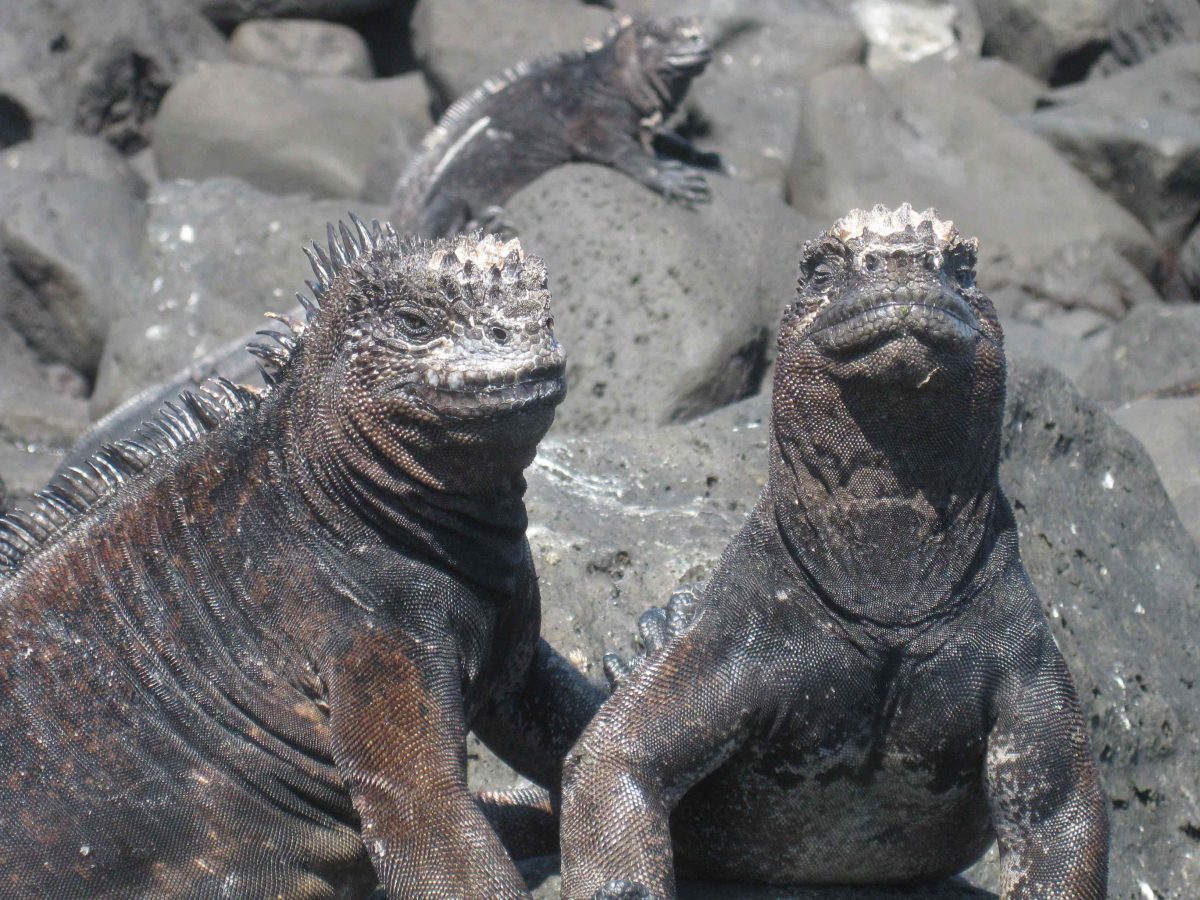Our lab group is involved with studies on the behavior, migratory movements, conservation physiology, and health of iconic marine megafauna (mainly marine iguanas, sea turtles, and sea lions) in the Galápagos Islands of Ecuador. Our work in the Galápagos is based at the Galapagos Science Center, a research station built on San Cristobal Island as a partnership between the Universidad San Francisco de Quito and the University of North Carolina at Chapel Hill. We are part of an international team of Ecuadorian, American, and German researchers with strong expertise in field biology, marine conservation, and veterinary medicine.
Further Reading:
Lewbart, G. A., Cohen, E. B., Hirschfeld, M., Muñoz-Pérez, J. P., García, J., Fu, A., Chen, E. P., and K. J. Lohmann. 2018. Field-based radiographic imaging of marine megafauna: marine iguanas (Amblyrhynchus cristatus) as a case study. Frontiers of Marine Science 5:40.
Lewbart, G. A., Hirschfeld, M., Brothers, J. R., Munoz-Perez, J. P., Denkinger, J., Vinueza, L., Garcia, J., and K. J. Lohmann. 2015. Blood gases, biochemistry and haematology of Galapagos marine iguanas (Amblyrhynchus cristatus). Conservation Physiology 3 (1): cov034 (doi: 10.1093/conphys/cov034). [Download pdf]
Lewbart, G. A., Hirschfeld, M., Denkinger, J., Vasco, K., Guevara, N., García, J., Muñoz, J., and K. J., Lohmann. 2014. Blood gases, biochemistry, and hematology of Galapagos green turtles (Chelonia mydas). PLoS ONE. e96487. doi:10.1371/journal.pone.0096487. [Download pdf]
Muñoz-Pérez, J.P., Lewbart, G.A., Hirschfeld, M., Alarcón-Ruales, D., Denkinger, J., Castañeda, J.G., García, J. and K. J. Lohmann. 2017. Blood gases, biochemistry and haematology of Galápagos hawksbill turtles (Eretmochelys imbricata). Conservation Physiology 5(1).

